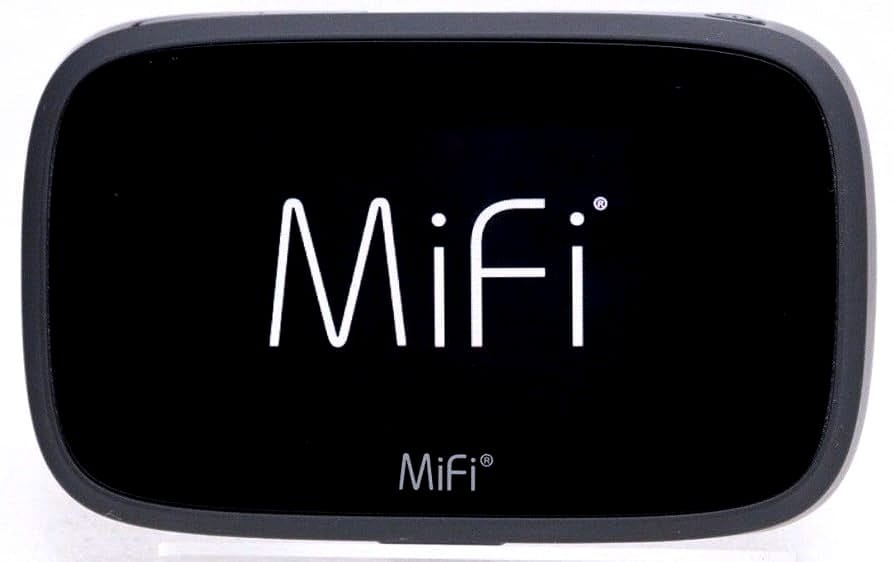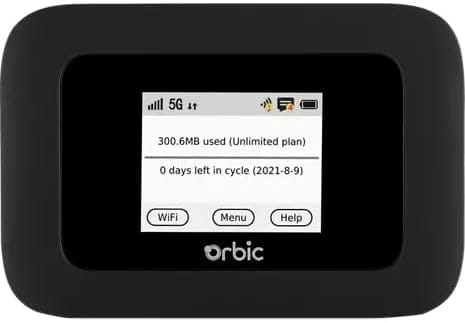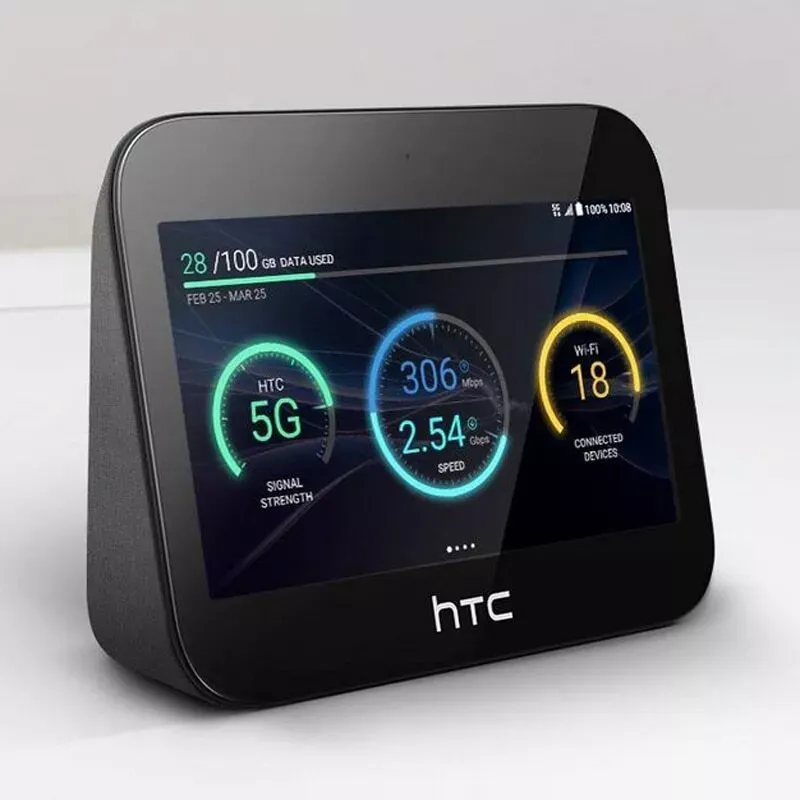MiFi 101: Everything You Need to Know About Portable Wi-Fi

In a time when connectivity is as important as the air we breathe, MiFi devices have become a beacon of internet freedom, offering a tailored solution to meet the on-the-go demands of our increasingly mobile world.
Understanding what MiFi is and its role in our lives is important as we navigate through areas with limited Wi-Fi access or during travel.
This technology leverages a cellular connection, converting 5G or other cellular data signals into a private Wi-Fi network for your devices. It’s great for anyone who needs a reliable internet connection without being tethered to physical broadband access points.
As we jump into the intricacies, we'll explore what MiFi is, breaking down how these portable devices work and their advantages over traditional Wi-Fi connectivity.
You'll discover the distinctions between MiFi and Wi-Fi, the importance of SIM cards, network coverage, and avoiding network congestion.
Further, we'll guide you through mobile hotspots, MiFi routers, and portable internet plans and help you decide on the best device and plan that fits your lifestyle.
What is MiFi?
MiFi is essentially a brand name that describes a wireless router, which functions as a mobile Wi-Fi hotspot device [1][2][3]. This small and portable router connects to a cellular network and can provide internet access for up to fifteen devices simultaneously [1]. It is distinct from traditional Wi-Fi as it uses cellular data to provide connectivity, making it an ideal solution for internet access while on the move [4][5].
Origin of the Term
The term "MiFi" was first introduced by Novatel Wireless in the United States with the launch of their MiFi 2200 device in May 2009 [1][4]. Although "MiFi" is a registered trademark owned by Inseego Corp. (formerly Novatel Wireless) in several countries, including the United States, Canada, and Mexico, and by Hutchison 3G in the United Kingdom [1][2], it has become a generic term used to describe any portable hotspot device.
The origin of the name "MiFi" is not officially explained but is often suggested to be short for "My Wi-Fi" [1][2]. This term has universally come to represent mobile Wi-Fi solutions, similar to how the brand name "Band-Aid" is commonly used to refer to all adhesive bandages [2][5].
How MiFi Works
MiFi devices function by utilizing cellular signals to establish a wireless internet connection. Whether integrated into a cell phone with tethering capabilities or through a standalone mobile hotspot, these devices require a SIM card and a cellular data plan. The MiFi unit then taps into the carrier's cellular grid, enabling you to access a mobile Wi-Fi network wherever there is cell service available [4][4][3].
Components Required
To access MiFi, several key components are necessary:
- Hotspot or Portable Router: This is the primary device that sets up your wireless network. It connects directly to the cellular service provided by nearby cell towers, which in turn delivers your Wi-Fi connection.
- SIM Card and Data Plan: These are essential for providing the data needed for your internet activities, such as downloading and uploading files. The SIM card connects to your service provider’s network and uses the data plan you have chosen to transmit data to and from the internet [4][4][3].
- Phone, Laptop, or Other Wi-Fi Device: These are the devices that connect to the MiFi hotspot, allowing you to use the internet provided by the MiFi setup. Whether it’s browsing, streaming, or working online, these devices utilize the Wi-Fi network created by the MiFi device [4][4][3].
Advantages of MiFi
MiFi devices are well-known for their compact size and ease of transport, making them a prime choice for those on the move. You can easily carry a MiFi device in your pocket or bag if you're traveling for business, on vacation, or simply moving about during your daily activities.
Security Features
One of the standout advantages of MiFi devices is their enhanced security compared to public WiFi networks. For example, public WiFi at airports and cafes can be a breeding ground for cyber threats as these networks typically lack encryption.
MiFi devices create a private WiFi network, which restricts access and encrypts the data being transmitted, thus safeguarding your personal information from potential hackers [6][8].
Connectivity Options
MiFi provides a flexible connectivity solution that is not confined to one location. Unlike traditional WiFi that relies on a fixed broadband connection, MiFi uses cellular network data (LTE, 4G, or 5G) to establish an internet connection.
This basically means you can access the internet in areas without broadband infrastructure, making MiFi an excellent alternative for home internet, especially in locations where traditional services are inadequate.
Additionally, for events requiring robust connectivity, such as conferences or concerts, MiFi devices ensure continuous, reliable internet access, even in high-traffic areas or in venues without regular internet service [8][7].
Comparison Between MiFi and Wi-Fi
MiFi devices and traditional Wi-Fi connections serve the same purpose of providing internet access but operate quite differently. A key distinction lies in their connectivity sources. Wi-Fi typically requires a fixed router connected to an internet service provider (ISP) through physical infrastructure like cables [9].
In contrast, MiFi works independently of fixed lines by connecting to the internet through cellular networks such as 4G or 5G [9]. This fundamental difference not only affects where these services can be used but also impacts their reliability and speed in various environments.
MiFi devices, due to their reliance on cellular networks, can provide internet access virtually anywhere there is cellular service. This is advantageous in areas where traditional broadband infrastructure is either weak or nonexistent [9].
However, the speed and quality of a MiFi connection can be influenced by factors like cell tower distance, network congestion, and physical obstructions, which might not affect a stationary Wi-Fi connection as significantly [9].
The choice between MiFi and Wi-Fi often depends on the specific needs and circumstances of the user. For individuals who travel frequently or work remotely in locations without reliable broadband, MiFi offers a flexible solution that Wi-Fi cannot match. It allows multiple devices to connect to the internet even when on the move [9]. This makes it great for professionals who need to make sure they can access online resources at all times.
Conversely, traditional Wi-Fi might be more appropriate in static environments like homes and offices, where high-speed internet and bandwidth are crucial for activities like high-definition video streaming or large-scale data transfers due to its typically faster and more stable connections [9]. Wi-Fi networks are also generally easier to scale within large buildings or across campuses where many users need to connect simultaneously.
In summary, while both MiFi and Wi-Fi provide essential internet connectivity, their best use cases differ significantly based on mobility, the need for speed, and the availability of infrastructure [9]. Choosing the right type of internet access depends on balancing these factors against the specific needs of the users.
Popular MiFi Devices and Plans
Top MiFi Devices
Certain MiFi devices stand out for their performance and reliability. The Inseego MiFi X PRO 5G, available through T-Mobile, is highly regarded for its robust 5G connectivity and ability to support multiple devices simultaneously [10].
1. Orbic Speed 5G UW Mobile Hotspot

Orbic Speed 5G UW Mobile Hotspot
This portable, lightweight mobile hotspot device let you to link up to 30 Wi-Fi enabled devices. Share the power of connectivity with friends, family, and colleagues wherever your journey takes you.
For Verizon users, the Orbic Speed 5G UW Mobile Hotspot offers efficient service with the added benefit of supporting external antennas for enhanced signal strength [10]. Unlocked devices such as the Netgear Nighthawk M6 provide flexibility, allowing use across various networks globally, which is ideal for travelers [10].
2. HTC 5G Hub

HTC 5G Hub
Connect up to 20 devices with the HTC 5G Hub. It boasts an all-day battery thanks to its powerful 5G processor. It acts as a plug-and-play entertainment hub and easy corporate VPN configuration.
The HTC 5G Hub emerges as a top contender, especially for business travelers, due to its powerful Qualcomm Snapdragon 855 processor and large battery, ensuring long-lasting connectivity [11]. Moreover, the device supports up to 20 wireless connections, catering to substantial user groups [11].
Choosing the right data plan for your MiFi device is important for optimizing your internet experience. For complete coverage, Verizon offers a plan that includes up to 60GB of high-speed data, which is great for heavy data users [10]. AT&T has a similar offering, making it a great option for those within its network coverage [10].
T-Mobile's plan is slightly different, providing 50GB of high-speed data, which still suffices for most moderate users [10]. For those who prioritize extensive data usage without interruptions, these plans fit various needs, ensuring you stay connected with reliable and fast internet service.
Conclusion
Reflecting on the broader significance, it's pretty clear that MiFi devices serve not just as a stopgap for areas lacking broadband infrastructure but as a pioneering frontrunner in the quest for universal internet access. This topic encourages us to consider the future of internet connectivity and its potential to evolve further to accommodate the ever-changing needs of the global population.
References
[1] - https://en.wikipedia.org/wiki/MiFi
[2] - https://iesmartsystems.com/what-is-mifi/
[3] - https://www.verizon.com/articles/wifi-hotspot-service-data-plans/what-is-mifi/
[4] - https://www.highspeedinternet.com/resources/what-is-mifi
[5] - https://www.allconnect.com/blog/what-is-mifi
[6] - https://www.signalboosters.com/blog/wifi-vs-mifi/
[7] - https://www.genuinemodules.com/which-is-better-mifi-or-router_a644
[8] - https://www.wilsonamplifiers.com/blog/mifi-vs-wifi-whats-the-difference/
[9] - https://hhdevices.com/difference-between-wifi-and-mifi/
[10] - https://www.pcmag.com/picks/the-best-mobile-hotspots
[11] - https://www.techradar.com/news/best-mobile-hotspots-for-3g-4g-and-5g
Enjoyed this article? Read more articles and guides at shopcellplans.com.

